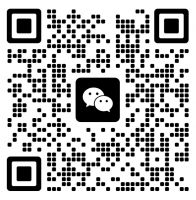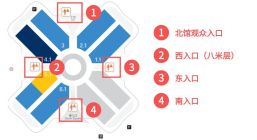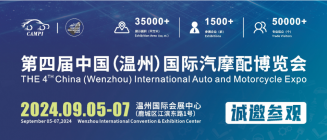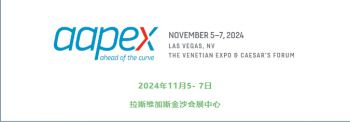Scan QRCode

Dongchedi tested 36 mainstream new energy vehicles on closed highways and urban roads using 15 high-risk scenarios.
I believe everyone can see the 'exam results' on various platforms. Simply put:
1. No car can achieve "zero errors" in all projects;
2. Only a few models such as the Wenjie M9, Xiaopeng G6, and Weipai Lanshan have passed half of the projects on the highway, and up to 15 models have all been rated as 0 in 6 highway scenarios;
Tesla performed surprisingly well, with the Tesla Model X only showing up in one scene in both urban areas and highways, making it the biggest winner in public opinion this time.
So for a while, topics such as "The complete annihilation of domestic intelligent driving", "Is assisted driving a scam", "By 2025, there won't be a single intelligent driving that can be hit" and so on took turns trending.
Even Musk on the other side of the ocean paid attention to this test and gave it a thumbs up; Most domestic manufacturers remain silent or do not comment.
The collision in the public opinion field is far more intense than in the testing field.
Our article aims to clarify two core issues regarding this controversy:
Is there any problem with the testing process of DCD and are there any loopholes in the rules?
2. Are the test results of Dongchedi informative and meaningful for the industry and consumers?
First of all, let me introduce the specific process of this test by Dongchedi. Dongchedi has covered real highways and urban roads, covering nearly 40 mainstream models from more than 20 brands such as Tesla, HarmonyOS, Xiaomi, and Ideal.
Among them, there are 6 major scenarios set up on the highway, including extreme scenes such as "disappearing front car", "obstacle avoidance in night construction area", "wild boar crossing", etc.
The urban area has set up 9 major scenarios, including high-frequency dangerous scenes such as "merging inside the turntable" and "children suddenly crossing".
The most eye-catching and widely spread scene among them is naturally the "disappearing preceding vehicle" on the highway, where the vehicle is traveling at 130km/h and suddenly changes lanes, exposing the stationary accident vehicle ahead.
Only 5 out of 36 car models successfully avoided danger, with a pass rate of only a pitiful 14%. Over 70% of the car models directly collided with the accident vehicle, and some models almost caused a second accident due to forced lane changes.
Of course, this is not the most tragic. In "Wild Boar Crossing", only the Tesla Model X barely passed, while the rest were completely wiped out.
So, if you watch the entire test, you will indeed feel like 'Dongchedi has torn open the' Emperor's New Clothes' of assisted driving '.
But is this really the case?
As the largest automotive media platform in China, Dongchedi is willing to invest a huge amount of manpower and financial resources to conduct large-scale tests that almost cover all mainstream popular car models, taking on the responsibility of a top media outlet, allowing readers to intuitively understand the risks faced by different car models in these extremely complex scenarios.
And they are also very thoughtful in setting the scene, except for a few scenes that deviate from reality, they basically meet the risks that may be encountered in actual traffic, and are all "high-risk, low probability" scenes extracted from real accident data.
These are precisely the "death traps" that drivers fear the most in daily driving and where assisted driving systems are most likely to fail.
It is definitely a good thing for car companies to face up to their technological shortcomings when these issues are exposed to the public.
However, there are also many areas of lack of rigor in the test conducted by Dongchedi.
The most controversial issue is controlling for variables.
Dongchedi's control variables this time are not very realistic, such as the difference in distance from the car that caused the most noise.
Because this time, the DCD set the following distance of all cars to the middle gear, but different cars have different following strategies and completely different distances from obstacle cars, which affects the braking response time and directly determines whether the system has enough time to successfully avoid danger.
For example, in "The Disappearing Front Car", Dongchedi set the assisted driving speed of all cars to a speed limit offset of+10%, resulting in some models actively accelerating to 130km/h and some models being limited to 120km/h.
This will result in two cars braking at the same point, with different speeds, resulting in vastly different outcomes and a loss of fairness in horizontal comparisons.
And in these high-risk scenarios, there is no standard for the number of tests for a single vehicle model.
The assisted driving system is affected by the instantaneous state of sensors and subtle differences in algorithm decisions, and has a certain degree of probability. It is difficult to truly represent the stability of the vehicle model in this scenario by only releasing the success or failure of one test, which greatly reduces the statistical significance of ranking and "pass rate".
Especially in some scenarios such as "disappearing front car", the rabbit car (guiding car) needs to perform specific operations such as sudden lane changes.
Ensuring the accuracy and consistency of the speed, timing, and trajectory of the rabbit car is crucial for the response of the tested vehicle.
From the video, it can be seen that during the testing process of different car models, the speed and cutting posture of the rabbit car are not consistent, which greatly affects the actual following speed of the following car.
So in the absence of a clear standard for the number of tests, it seems somewhat sloppy and imprecise for public opinion to directly summarize the results into a "pass rate" ranking.
The most astonishing thing is that during such a high-speed testing process, multiple staff members and filming equipment were deployed in the emergency lane on the right side, which is a very unsafe behavior.
Placed in the daily testing field, it is basically the kind of existence that will be blocked by the testing field.
Moreover, the activity personnel on the right side also greatly affected the test results. The EAES function equipped on several models of Hongmeng Zhixing ADS 4, as well as the AES function equipped on several models of NIO and Ideal, will find a suitable safe space to avoid in the scenario of the front car cutting out. If the emergency lane on the right is open, it can be avoided to the right.
All of these indicate that Dongchedi did have many flaws and unreasonable rules in this test, which objectively affected the final data and results.
Write at the end
As media outlets labeled as' testing ', we are also well aware of the difficulty of media planning leading a large-scale test.
But a large-scale exclusive test with opaque standards and undisclosed processes is highly susceptible to questioning the fairness and objectivity of its results.
So 'open source' is the key to breaking this doubt, and we also call on DCD to establish an open, transparent, and multi-party testing ecosystem alliance in the future. During large-scale testing, we can also join in and provide more professional testing services.
Let's make every piece of data public and transparent together, enhance the credibility of testing through multi-party checks and supervision, and make the results more convincing.
After all, 'when cracking down on counterfeits becomes a gimmick, then those who crack down on counterfeits are just as evil as those who fabricate them.' Car reviews that are guided by emotions and controversies, or whose results serve specific commercial purposes, lose their legitimacy. This is essentially no different from car companies that engage in false advertising, and may even be more deceptive.
Returning to our original intention, we insist that the ultimate goal of evaluation must and can only be to provide consumers with real and valuable information references, helping them make more informed car purchasing decisions. All process design, standard setting, and result release should be based on this goal as the highest criterion.
AMS2024 Exhibition Guide | Comprehensive Exhibition Guide, Don't Miss the Exciting Events Online and Offline
Notice on Holding the Rui'an Promotion Conference for the 2025 China (Rui'an) International Automobile and Motorcycle Parts Exhibition
On September 5th, we invite you to join us at the Wenzhou Auto Parts Exhibition on a journey to trace the origin of the Auto Parts City, as per the invitation from the purchaser!
Hot Booking | AAPEX 2024- Professional Exhibition Channel for Entering the North American Auto Parts Market
The wind is just right, Qianchuan Hui! Looking forward to working with you at the 2024 Wenzhou Auto Parts Exhibition and composing a new chapter!
Live up to Shaohua | Wenzhou Auto Parts Exhibition, these wonderful moments are worth remembering!
Free support line!
Email Support!
Working Days/Hours!





